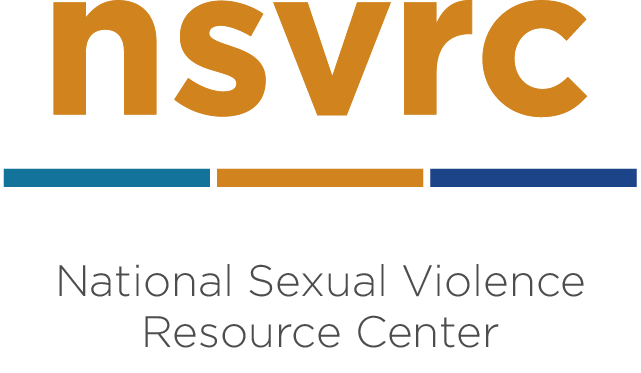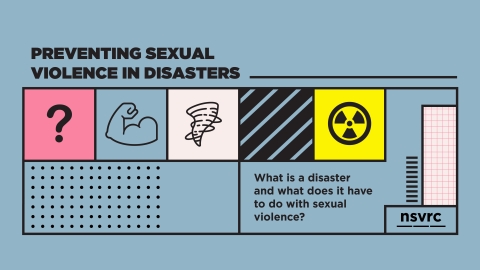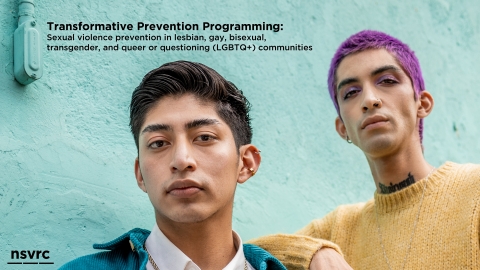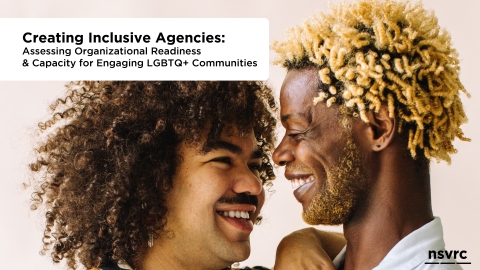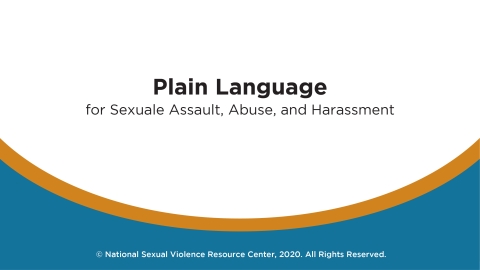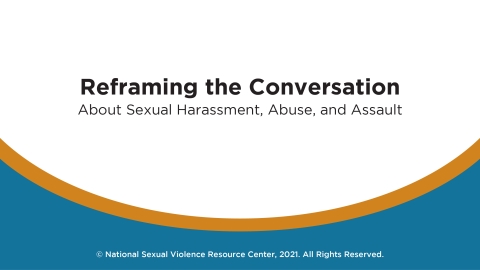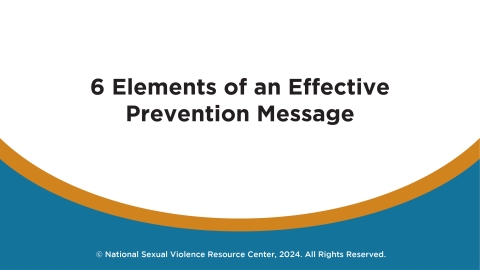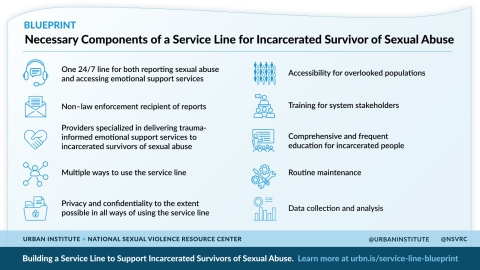The NSVRC collects information and resources to assist those working to prevent sexual violence and to improve resources, outreach and response strategies. This page lists resources on this website that have been developed by NSVRC staff.
- September 29, 2024
- NSVRC
This infographic explores what disasters are and what they have to do with sexual violence.
- September 29, 2024
- NSVRC
The purpose of the guide is to provide information to state and community-based sexual violence prevention educators and practitioners on preventing sexual violence against individuals who identify as lesbian, gay, bisexual, transgender, queer or questioning (LGBTQ+). The goal is to share some of the best information and resources that are currently available, with the understanding that resources are constantly being created and updated.
- September 29, 2024
- NSVRC
The success of sexual violence services and prevention efforts within any specific population is highly dependent upon the organization and its staff members having the skills and knowledge needed to value and affirm all members of the community. Before reaching out to lesbian, gay, bisexual, transgender, queer or questioning (LGBTQ+) communities, or trying to implement prevention strategies or survivor services, organizations should first assess their current organizational and individual capacity to appropriately engage with LGBTQ+ people in affirming ways.
- September 24, 2024
- NSVRC
Sally talks with a team in MN that put their heads together to build an intersectional approach to data collection, analysis, and use for the Minnesota Student Survey. This is part 2 of a 3-part series. Participants Sally J. Laskey, Evaluation Coordinator, National Sexual Violence Resource Center Cory Cole, MPH, Injury & Violence Prevention Section at Minnesota Department of Health. Barbara J. McMorris, PhD, Associate Professor in the School of Nursing at the University of Minnesota. Marissa Raguet, MPH, Minnesota Department of Health G. Nic Rider, PhD, Associate Professor at the
- September 24, 2024
- NSVRC
Sally talks with a team in MN that put their heads together to build an intersectional approach to data collection, analysis, and use for the Minnesota Student Survey. Listen to part 2 to learn about survey results and watch for part 3 to hear how youth used the data. Participants Sally J. Laskey, Evaluation Coordinator, National Sexual Violence Resource Center Cory Cole, MPH, Injury & Violence Prevention Section at Minnesota Department of Health. Barbara J. McMorris, PhD, Associate Professor in the School of Nursing at the University of Minnesota. Marissa Raguet, MPH, Minnesota
- August 30, 2024
- NSVRC
This episode is a rebroadcast of a conversation with Dr. Hennessy Garza with NSVRC staff breaking down three challenges in evaluating bystander intervention-focused prevention programs and three ways to address those challenges. Show Notes: Beyond Intervening: Strengths, Limitations, & Implications for Bystander Intervention Research- Extended Conversation with Dr. Hennessy Garza (Video Podcast) Engaging Bystanders to Prevent Sexual Violence (NSVRC Information Packet) NSVRC Evaluation Toolkit (Digital Prevention) NSVRC Bystander Intervention Resources (Online Special
- July 25, 2024
- NSVRC
This 30-minute course explains why plain language is important for messaging about sexual violence and provides opportunities to practice using plain language.
- July 25, 2024
- NSVRC
This 30-minute course explores how the general public understands sexual violence. It provides opportunities to practice reframing messages about sexual violence to get at root causes and ultimately change how people understand it.
- July 25, 2024
- NSVRC
This 30-minute course teaches you how to create effective messages about preventing sexual harassment, abuse, and assault. It includes slide visuals, audio narration, and interactive quizzes to help you practice what you learn.
- July 18, 2024
- NSVRC
Sexual abuse and harassment in US correctional facilities remains a critical issue, with thousands of cases reported annually. These incidents are significantly underreported, however, owing to barriers including fear of retaliation, stigma, and lack of confidentiality. In 2003, lawmakers passed the Prison Rape Elimination Act (PREA) with unanimous, bipartisan support and charged the National Prison Rape Elimination Commission with developing standards that were released in 2012. Over a decade later, fewer than half of states, territories, and the District of Columbia are in full compliance
Pagination
- Previous page
- Page 2
- Next page
